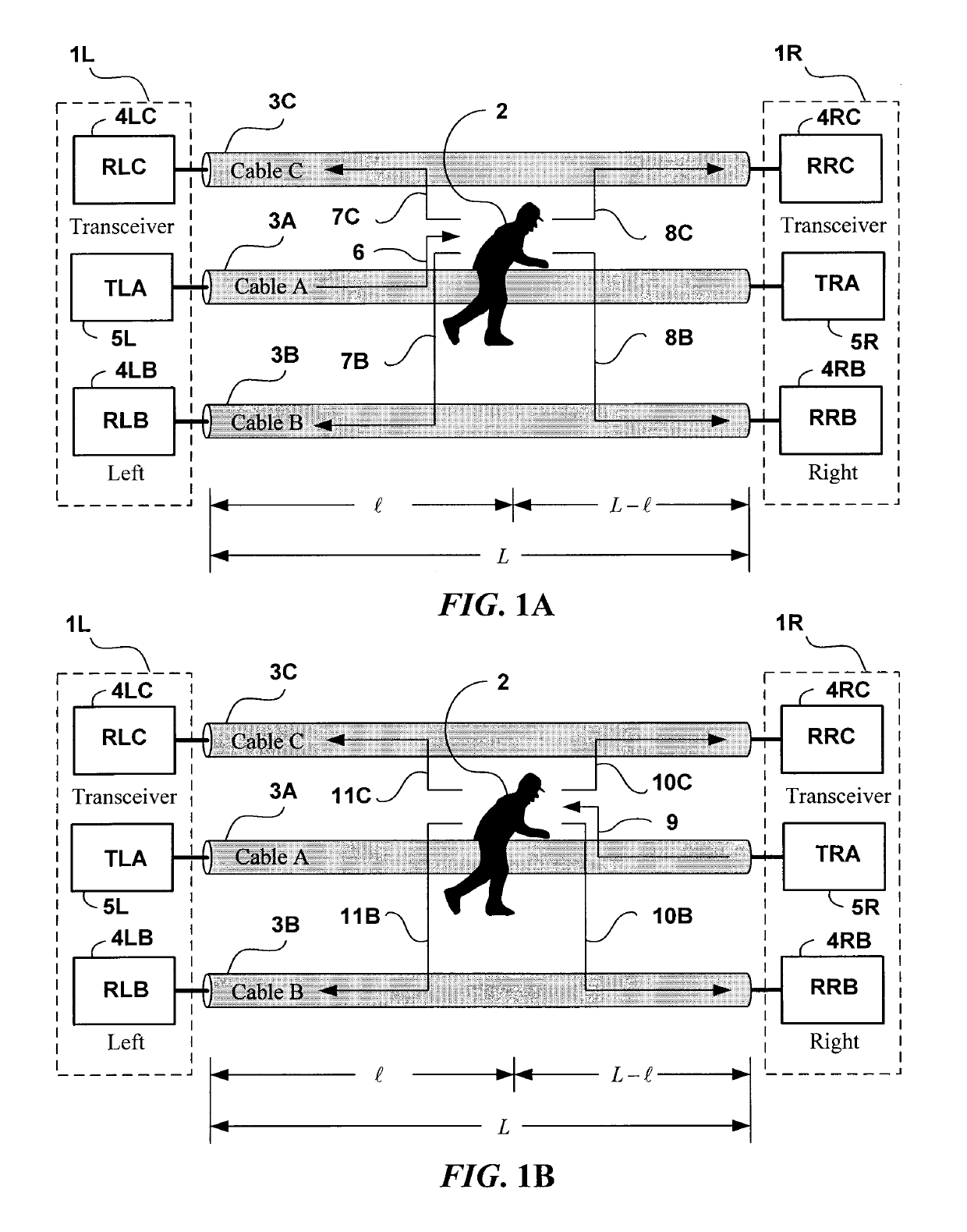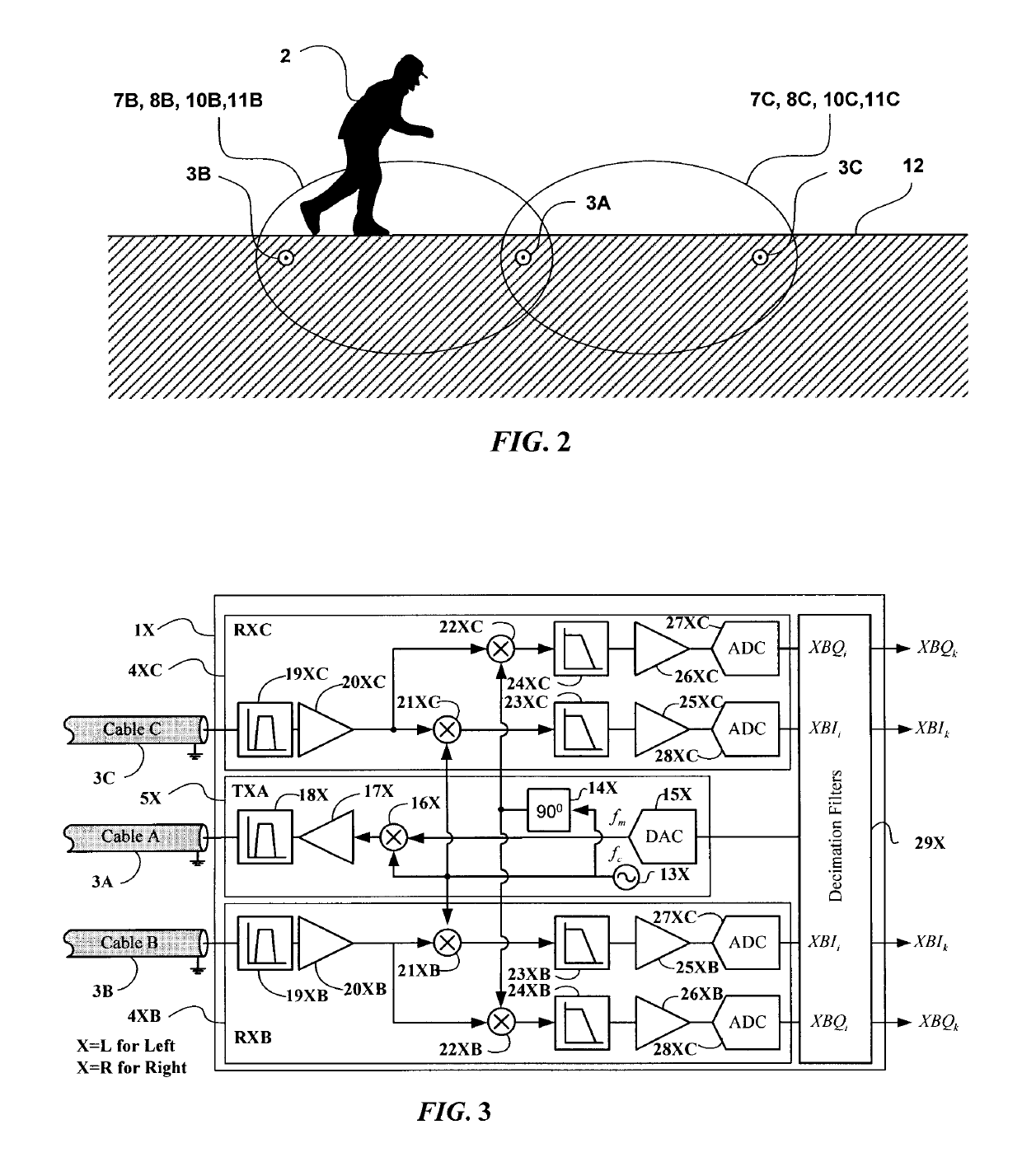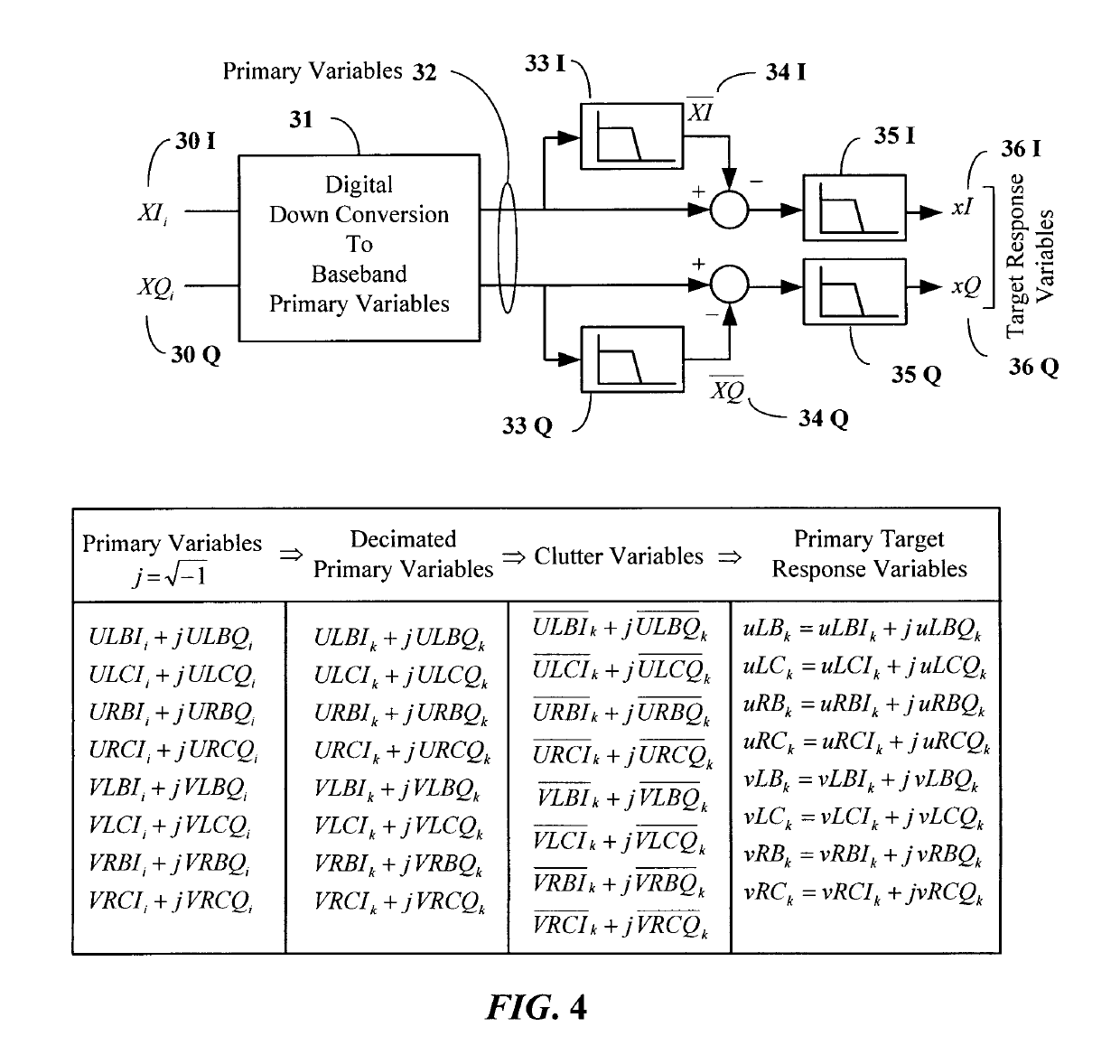MIMO cable guided intrusion detection sensor
a technology of intrusion detection and guided cable, which is applied in the direction of measuring devices, using reradiation, instruments, etc., can solve the problems of more complex sensors than cw sensors, high cost of custom cable design, radio regulatory problems, etc., and achieve the effect of reducing nuisance and false alarm ra
- Summary
- Abstract
- Description
- Claims
- Application Information
AI Technical Summary
Benefits of technology
Problems solved by technology
Method used
Image
Examples
embodiment
Wide-Band Embodiment
[0094]Returning to FIG. 3, it is contemplated that the Wide-Band embodiment of the present invention utilizes a Pseudo Noise (PN) coded transmission. While other spreading codes could be used, the simplicity of generating a pseudo random noise sequence using a Linear Feedback Shift Register (LFSR) to create a maximal length code (M-Sequence) makes this well-known approach attractive for this application. An m stage LFSR generates a PN sequence that repeats after M=2m−1 bits. To start the LFSR one loads the register with an m-bit word called the seed. The LFSR generates all possible m-bit numbers with the exception of an all zero word. The order in which it generates the m-bit numbers is determined by the feedback paths used by the LFSR. There are many different feedback possible feedback settings that generate a PN sequence. They are determined by a Primitive Polynomial.
[0095]The PN sequence of 1's and 0's is converted into a sequence of +1's and −1's that are us...
PUM
 Login to View More
Login to View More Abstract
Description
Claims
Application Information
 Login to View More
Login to View More - R&D
- Intellectual Property
- Life Sciences
- Materials
- Tech Scout
- Unparalleled Data Quality
- Higher Quality Content
- 60% Fewer Hallucinations
Browse by: Latest US Patents, China's latest patents, Technical Efficacy Thesaurus, Application Domain, Technology Topic, Popular Technical Reports.
© 2025 PatSnap. All rights reserved.Legal|Privacy policy|Modern Slavery Act Transparency Statement|Sitemap|About US| Contact US: help@patsnap.com



